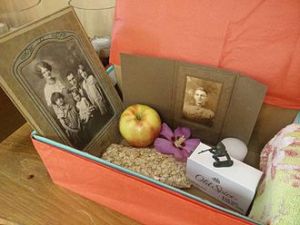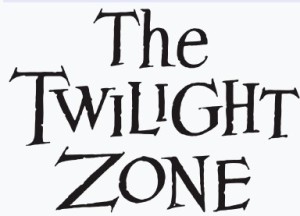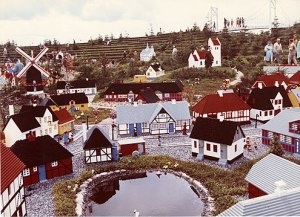My daughter forwarded a video about a suburb of Knoxville known as Safety City. In this little town you’ll find roads and traffic signals, businesses and shops, but no cars. Sidewalks are for pedestrians while streets are reserved for bicyclists and other “non-motorized vehicles”. Everything in “SC” is an easy walk, whether to the post office, football stadium, movie theater, or dinner at Applebee’s. Oh, and I almost forgot to mention… everything in Safety City is miniature.

Safety City is a novel concept because it reduces the real-life aspects of a town down to a dimension children can relate to. And relate they do. Entire classes bus over to Safety City to experience vehicular, pedestrian, bicycle, and fire safety at a young age. So much more effective than traffic school on a blackboard!
I’ve always been a fan of miniatures; a feeling hearkening back to my childhood. Anyone who read Gulliver’s Travels knows “miniature”, as in the inhabitants of the (literally) small town of Lilliput. Anyone who ever held a snow globe imagined those little places and figures inside the glass coming to life.

I wonder if grade-school children still make dioramas. What a cool concept for a kid. Within the confines of a shoebox you create a miniature world of your liking: buildings, people, animals, trees, etc. Then you cut a peephole in the center of one end of the box and cover the open top with tissue paper. When you look through the hole you see your little diorama world, with the light filtering through from above. It gives your creation a startling sense of reality.

Model trains certainly fueled my interest in miniatures. I remember several friends who collected the popular “HO”-scale sets (1:87, or about 2″-high trains). They could buy so many accessories (endless tracks, buildings, trees, and figures) they could create an HO-scale world big enough to fill a two-car garage. Go figure, the only train set I ever owned was the “G”-scale, where the train’s a good 8″-10″ in height. Not so miniature.
 Speaking of model trains, one of my favorite episodes of the old television series The Twilight Zone was called “Stopover in a Quiet Town”. A couple wakes up in a strange house after a night of partying, can’t get the phone or the lights to work, and find the refrigerator stocked with plastic food. They walk outside, only to discover the surrounding town is utterly still – no people, no sounds, no movement. Then the train whistles and pulls into the station, so they hop aboard, hoping to be taken back to somewhere familiar. But the train merely travels in a wide oval and returns to the same station where it picked them up. As the couple steps off the train, the giant hand of a child reaches down to grab them, while a mother’s voice can be heard saying, “Be careful with your pets, dear…” Twilight Zone indeed.
Speaking of model trains, one of my favorite episodes of the old television series The Twilight Zone was called “Stopover in a Quiet Town”. A couple wakes up in a strange house after a night of partying, can’t get the phone or the lights to work, and find the refrigerator stocked with plastic food. They walk outside, only to discover the surrounding town is utterly still – no people, no sounds, no movement. Then the train whistles and pulls into the station, so they hop aboard, hoping to be taken back to somewhere familiar. But the train merely travels in a wide oval and returns to the same station where it picked them up. As the couple steps off the train, the giant hand of a child reaches down to grab them, while a mother’s voice can be heard saying, “Be careful with your pets, dear…” Twilight Zone indeed.
Replicas of miniature cities can be found everywhere, whether Knoxville’s Safety City, Disneyland’s Storybook Land (viewed from canal boats), or Legoland’s Billund Resort, Denmark’s largest tourist attraction outside of Copenhagen. There’s even a “top ten” of the world’s miniature cities, including “Miniaturk”, 122 famous buildings of Turkey in a park-like setting in Istanbul; “Tobu World Square” in Japan, which showcases the world’s UNESCO world heritage sites in the presence of 140,000 miniature people, and The Museum of Roman Civilization (which I’ve seen myself), a remarkable recreation of ancient Rome’s “Golden Age” thirty-six years in the making.

Maybe all this talk of miniatures has you thinking of the recent trend of tiny homes. Those are an entirely different concept; not at all “miniature”. A tiny home is like a full-scale house with most of the air sucked out of it. The components are still full-scale but the spaces are decidedly smaller than normal. Tiny homes kind of look like shoeboxes to me. Maybe we should add peepholes on the ends so we can watch the inhabitants try to make a living in their cramped quarters.
Some content sourced from Wikipedia, “the free encyclopedia”.
